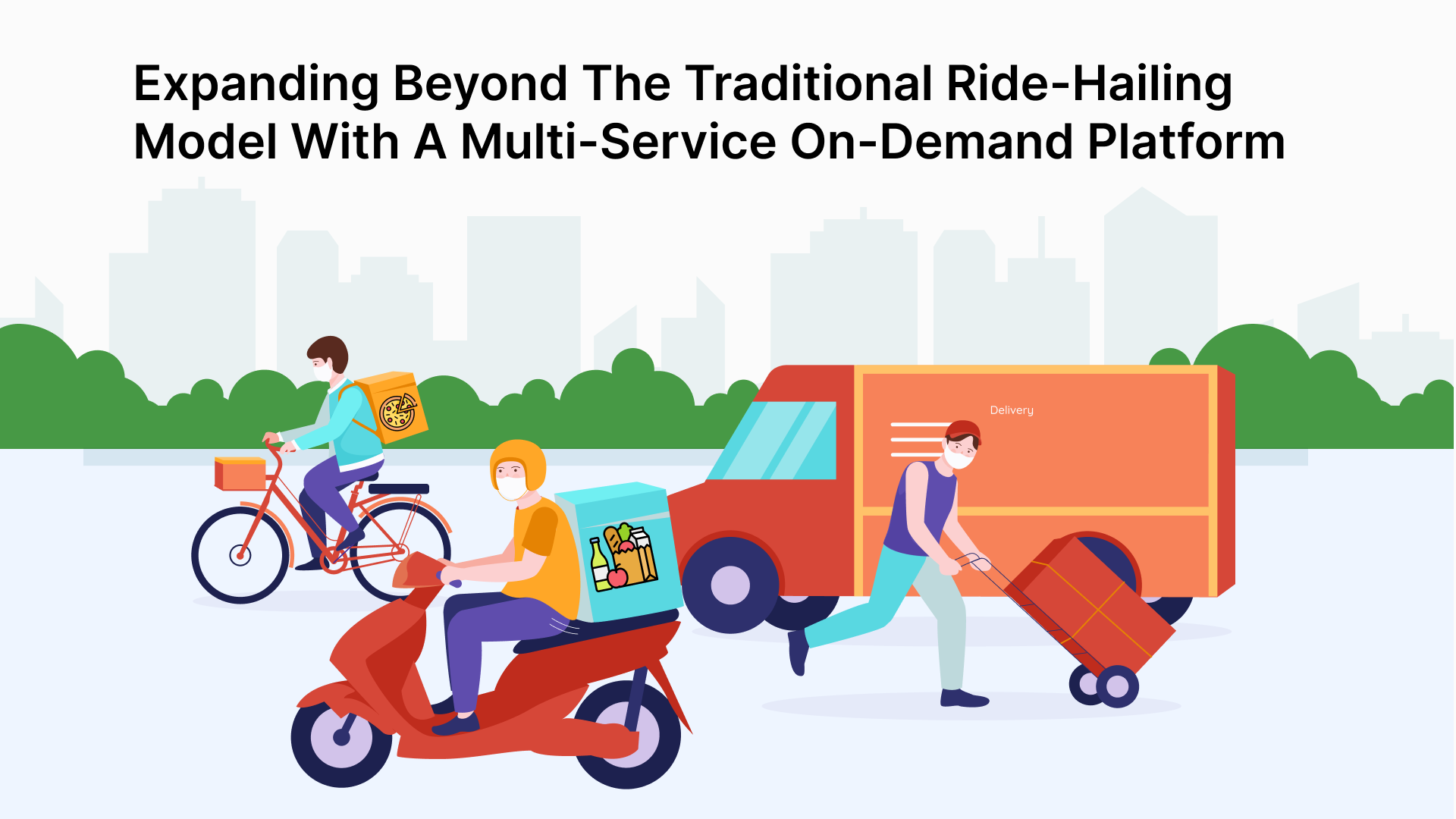In today’s rapidly evolving digital landscape, the traditional ride-hailing industry is witnessing a significant transformation with the emergence of multi-service on-demand platforms.
These platforms go beyond the conventional model of offering just transportation services, extending their reach to encompass a diverse range of on-demand offerings such as food delivery, parcel delivery, and more.
This shift signals a paradigmatic change in the way we perceive and utilize on-demand services, presenting new opportunities and challenges for both service providers and consumers.
This article delves into the intricacies of multi-service on-demand platforms, exploring their benefits, evolution, strategies for successful implementation, and the future trajectory of on-demand services in the transportation industry.
Introduction to Multi-Service On-Demand Platforms
Overview of the On-Demand Economy
In a world where instant gratification reigns supreme, the on-demand economy has taken center stage. From ordering food to getting a ride, consumers expect services at their fingertips with just a tap on their smartphone.
Definition and Scope of Multi-Service Platforms
Multi-service on-demand platforms go beyond the one-trick pony model of traditional ride-hailing services. These platforms offer a variety of services like food delivery, grocery shopping, and even pet grooming, all conveniently accessible through a single app.
Evolution of the Ride-Hailing Industry
Rise of Traditional Ride-Hailing Services
Remember the days when hailing a cab meant standing on a street corner, waving frantically, and hoping for the best? Then came ride-hailing services like Uber and Lyft, revolutionizing transportation with just a few taps on a screen.
Shift Towards Multi-Service Models
As consumers crave more convenience and options, ride-hailing companies are expanding their horizons. They’re morphing into multi-service platforms, offering everything from scooter rentals to beauty services, creating a one-stop-shop for all your on-demand needs.
Benefits of a Multi-Service On-Demand Platform
Enhanced User Experience and Convenience
Why juggle multiple apps when you can have it all in one place? Multi-service platforms streamline the user experience, making it a breeze to switch from ordering a ride to scheduling a massage without missing a beat.
Increased Business Opportunities and Revenue Streams
For businesses, the beauty of a multi-service platform lies in diversification. By offering a range of services, companies can tap into new markets, attract a broader customer base, and increase revenue streams, all while keeping customers coming back for more.
Challenges and Opportunities in Implementing Multi-Service Models
Regulatory and Legal Considerations
With great innovation comes great responsibility. Navigating the regulatory landscape can be a hurdle for multi-service platforms, as different services may fall under varying rules and regulations. Ensuring compliance while staying agile is key to success.
Technological Integration Challenges
Integrating different services seamlessly on one platform is no small feat. From coordinating logistics to ensuring a consistent user experience, technological hurdles abound. However, overcoming these challenges can lead to a competitive edge and opportunities for growth in the ever-evolving on-demand economy.
Strategies for Successful Integration of Multiple Services
Optimizing Supply and Demand Matching
When juggling multiple services, it’s crucial to strike a balance between supply and demand. Utilize data analytics and algorithms to predict peak times and areas of high demand. This way, you can efficiently allocate resources and maximize service availability to meet customer needs.
Building Trust and Ensuring Safety Across Services
Trust is the cornerstone of any successful multi-service platform. Implement rigorous background checks for service providers, offer transparent pricing models, and prioritize customer feedback mechanisms. By prioritizing safety and reliability across all services, you can build a loyal customer base and foster a positive brand reputation.
Case Studies of Successful Multi-Service Platforms
Uber: From Ride-Hailing to Food Delivery and More
Uber has set the bar high by expanding from its ride-hailing roots to offer a diverse range of on-demand services, including food delivery with Uber Eats and courier services with Uber Connect. By leveraging its existing infrastructure and customer base, Uber has successfully integrated multiple services under one platform, providing convenience and choice to users worldwide.
Gojek: Offering a Diverse Range of On-Demand Services
Originating in Indonesia, Gojek has revolutionized the on-demand services landscape by offering a wide array of services, from transportation and food delivery to shopping and payment solutions. By understanding the unique needs of its market and tailoring services to meet them, Gojek has become a household name, epitomizing the potential of a multi-service platform done right.
The Future of On-Demand Services in the Transportation Industry
Trends Shaping the Evolution of Multi-Service Platforms
The future of on-demand services lies in personalization and seamless integration. Customized service offerings, predictive analytics for efficient resource allocation, and enhanced user experiences will drive the evolution of multi-service platforms. Embracing sustainability practices and fostering community engagement will also be key trends shaping the industry’s future landscape.
Potential Disruptive Innovations and Emerging Technologies
As technology advances, the transportation industry is poised for disruptive innovations that could further revolutionize on-demand services. From autonomous vehicles and drone delivery to blockchain for secure transactions and AI for personalized recommendations, emerging technologies have the potential to reshape how multi-service platforms operate.
Staying agile and open to adopting new technologies will be crucial for staying competitive in the rapidly changing landscape of on-demand services. As multi-service on-demand platforms continue to redefine the landscape of the ride-hailing industry, it is evident that the future holds immense potential for innovation and growth.
By embracing the opportunities presented by these platforms and navigating the associated challenges with strategic foresight, stakeholders can position themselves at the forefront of this dynamic sector. With a commitment to adaptability, technological advancement, and customer-centricity, the evolution of on-demand services in transportation is poised to shape a more connected, efficient, and convenient future for all.












